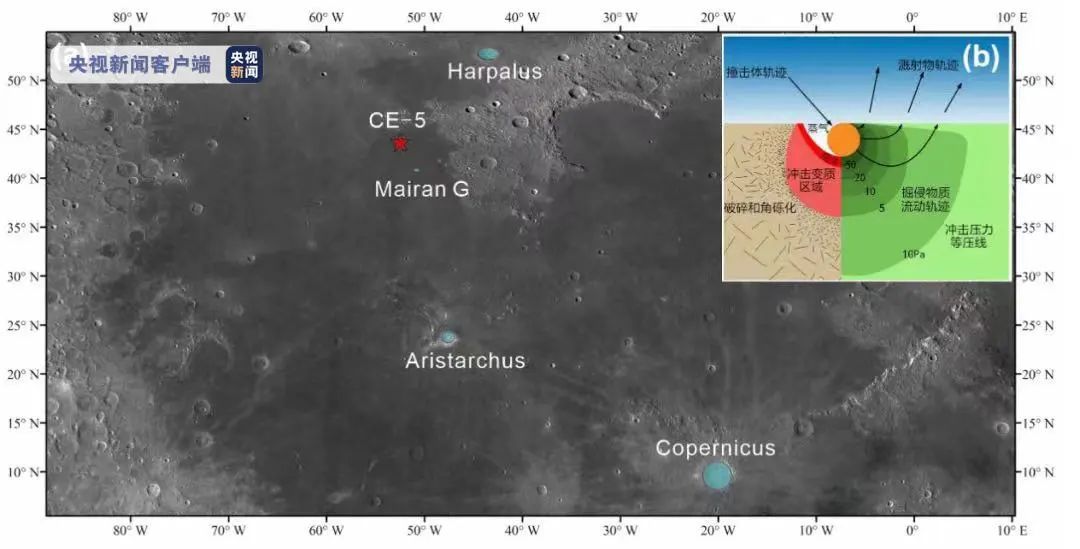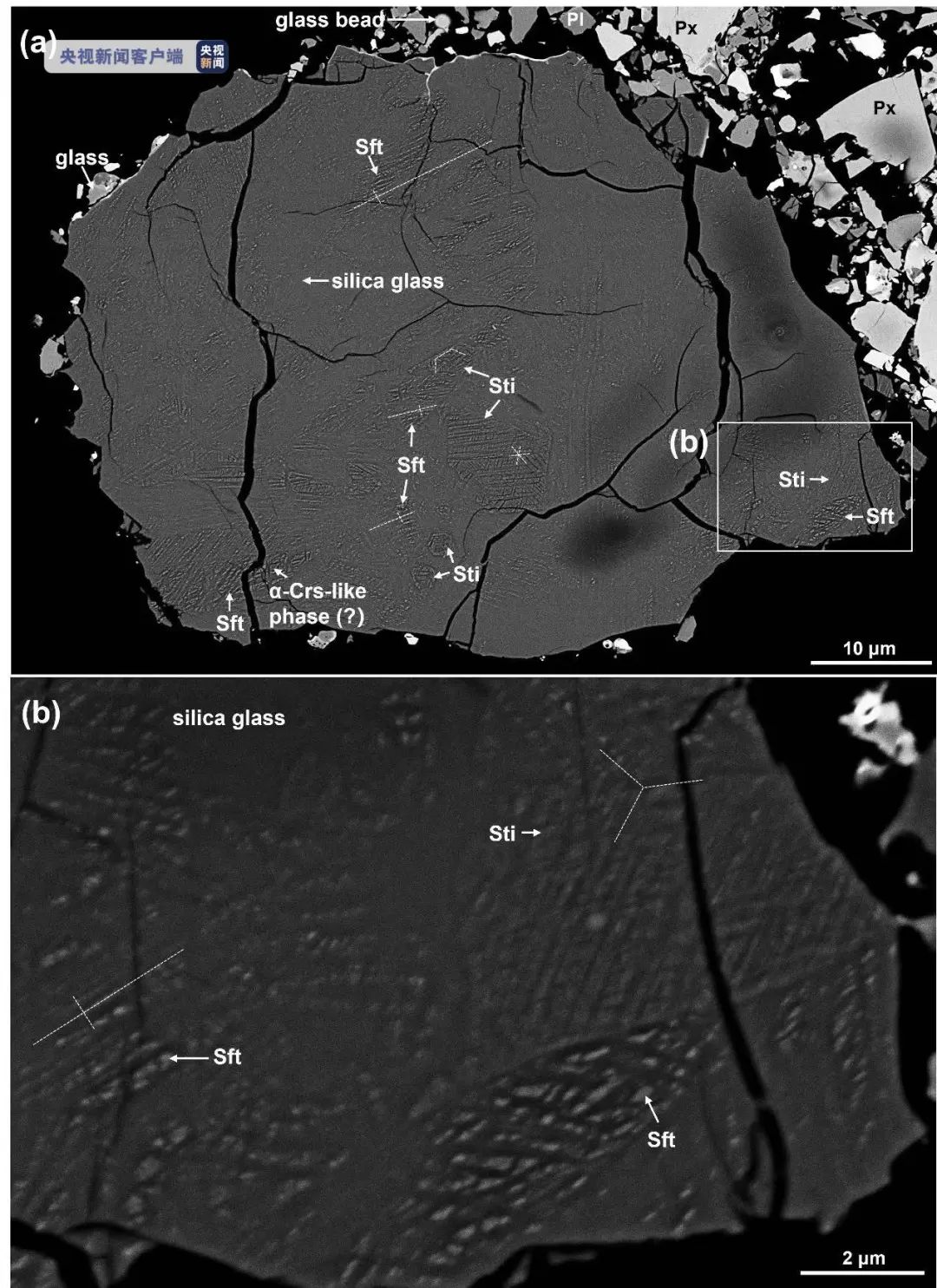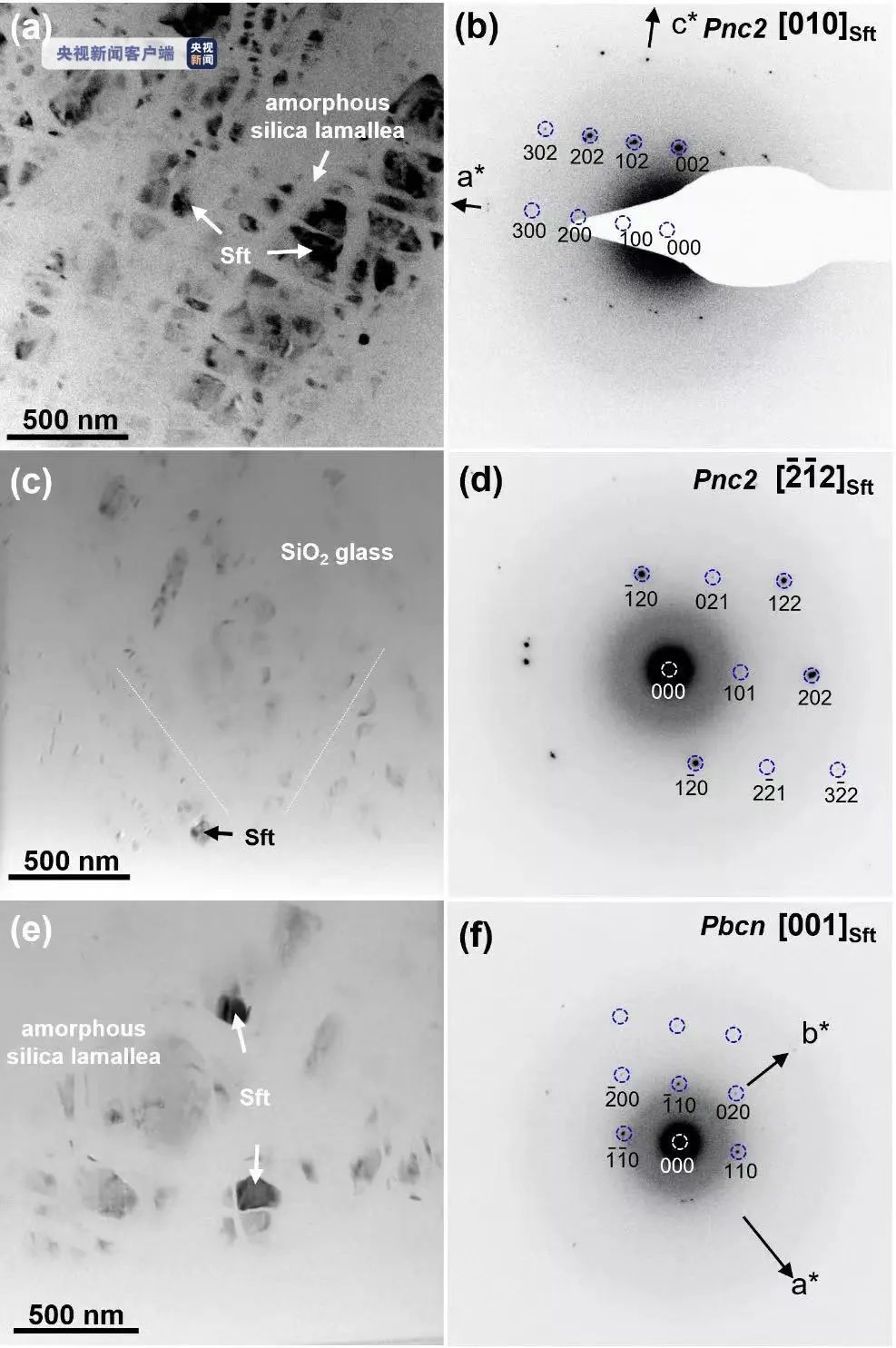Recently, a team of Du Wei, a member of the Center for Excellence in Comparative Planetology, Chinese Academy of Sciences, and the Institute of Geochemistry, Chinese Academy of Sciences, discovered the high-pressure phases of symbiotic silica—Sertzite and Sitrite—in the Chang’e-5 lunar soil sample.
It is understood that the impact is an important geological process of material mixing on the lunar surface, and an important factor controlling the formation and evolution of lunar soil. As an important recorder of impact events, high-pressure minerals are of great significance to limit the temperature and pressure conditions of rock impact and to invert the size of impact craters. However, no matter the lunar return samples or lunar meteorites, high-pressure mineral phases are rarely found, which limits the research on the inversion of the impact process on the lunar surface through lunar samples.

(a) Chang’e 5 landing site, Mairan G, Aristarchus, Harpalus and Copernicus craters; (b) Schematic diagram of the formation of the craters
The Chinese scientific research team deduced that the formation mechanism of the sapphire and sapphire quartz is solid-solid phase transition by studying the morphological characteristics and distribution rules of the silica phase like serratite, strychnite, α-cristobalite-like silica and silica glass in detail; Kinetic control of the process, cerite appears as a metastable phase at lower pressures, and part of pyrite transforms to biscite with increasing temperature, so this silica clast records the rise of a lunar surface impact event. pressure followed by a heating and depressurization process. Based on the temperature and pressure conditions of its formation and the simulation calculation of impact conditions, it is speculated that the silica debris is likely to come from the Aristarchus impact crater in the south of the Chang’e-5 sampling area.

Silica clasts containing Sft (Sft) and Sti (Sti) in the Chang’e-5 lunar soil sample (backscattered electron image); α-Crs-like phase: α-cristobalite-like silica phase Pl : feldspar; Px: pyroxene
This study is the first time to confirm the discovery of sapphire quartz in the lunar return sample, which provides important evidence for the previous view that there is sputtering from a distant impact crater in the Chang’e-5 sampling area through remote sensing data analysis.

